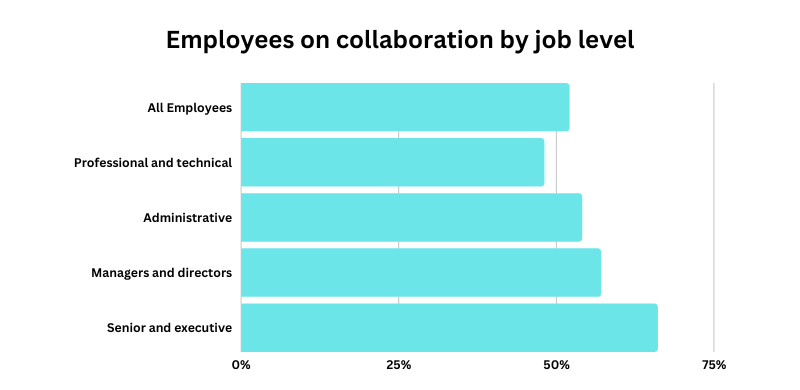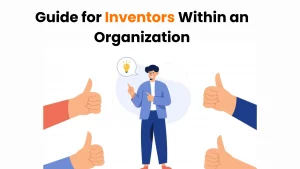Does pineapple belong on pizza?
No, we’re not here to fuel the age-old debate.
We just want you to think about how Sam Panopoulos woke up one day, and something clicked in his mind. You may say something did inspire innovation in him that day to put pineapples on his regular pizza.
“People only put on mushroom, bacon, and pepperoni, that’s all,” says Panopoulos. “I had pineapple in the restaurant, and I put some on, and I shared it with some customers, and they liked it. And we started serving it that way. For a long time, we were the only ones serving it.”
Whether you like it or hate it, you sure can’t ignore the pineapple on pizza phenomenon worldwide.
You must be thinking about what it has to do with inspiring innovation. But the thing is, that is how innovation happens.
Innovation strikes an individual while they are working on a daily task and looking to optimize existing solutions, processes, and products. It is never out of nothing.
However, some organizations seem to be inspiring innovation and coming up with new solutions consistently, whereas others can’t grasp how to inspire innovation.
We’re here to help!
How to inspire your workforce to be innovative?
Before we start sharing trade secrets, we have a question for you.
So far, what is the standard practice that you follow to inspire innovation in your organization?
- Hold hackathons
- Introduce innovation programs from time to time
- Dedicate an email address or a whiteboard
- Maybe you hold team meetings or meet over coffee breaks
- A physical idea box to collect ideas
If your innovation strategy includes any or all of them, we’ve got news for you.
You are losing out on 66% of your employees’ ideas.
Here’s how you can actually start capturing innovation.
Invest in Your Employees so they Invest Back in You
We always believe the best way to make someone believe you care is to show them.
Here’s our case in point:
One of our clients, who aims to manufacture the best and most novel equipment and solutions for their customers, wanted to leverage their entire employee base to do so.
Essentially, they wanted to create a flat hierarchy where every employee, no matter the designation, feels free to ideate, invent, submit invention disclosures, and own the project.
But the problem was how it would work on such a large scale.
They, after careful consideration and collaboration, integrated a customized idea and innovation management software with their existing tech stack. It was their investment towards bringing employees on board and their ROI within the first year:
- Their employees submitted over 1,000 ideas and invention disclosures.
- They saw a 63% increase in filings this year alone (and we still have three more months to go).
- A 4X increase in employee participation in the innovation challenges they ran through our platform.
- There was an uptick in collaboration among employees, with 75% of invention disclosures having one or more co-inventors.
Simply put, you must show your commitment to employee innovation by investing in tangible assets.
Related Read: The CIO’s Role in Innovation: 2023 Edition
Give Every Employee a Voice
More often than not, we see a similar flow in organizations, large and small.
So many great ideas and initiatives flow from the C-suite and the top management to the rest of the workforce.
But the problem is it instantly switches on the part of the brain where an employee wants to conform to their leaders, oblige them, and follow their lead.
Creativity and innovation take a back seat.
The top-down approach ends up being the most harmful practice as it’s the employees who work on the daily operations, processes, products, and solutions and even talk to the customers on a regular basis.
For instance, did you know companies now provide repair technicians the liberty to and incentives for selling products?
Since customers trust them implicitly, and whatever they suggest they believe is in their best interest, they buy products. So, in addition to traditional sales, companies have started making more money through their technicians’ support.
Inspiring innovation is not about asking them to think outside the box but about employing people with diverse skills and talents to contribute to business strategies.
Incentivise Innovation
Yep, we are quoting the Joker. Because even if someone, like an employee, does something for free (considering it as a part of the job), they don’t make it a part of their individual goals.
On the other hand, when they have an incentive to look forward, you see clear signs of effort and determination in finding solutions.
When we say incentive, we don’t necessarily mean monetary incentives. Although they very much can be in the form of bonuses and appraisals, they are more than that. They can be:
- Travel Incentives
- Paid day offs
- Job security
- Employee empowerment
- Career advancement opportunity
- Project ownership
- Acknowledgment and recognition
- Inviting their input in important decisions
Teamwork Makes the Dream Work
Launch teams-based idea initiatives to bring more ideas to life. Team-based initiatives have proven to increase company-wide engagement by 43%, and you must tap into such knowledge sources.
Basically, as humans we are, by nature, wired to work better in groups and thrive.
So, even when you run innovation challenges by dividing people into different teams, you’ll see wonderful results.

Source: Zippia
For example, when we started using a similar strategy to get more ideas, we saw a significant boost in the number of ideas submitted (by each team) for every business challenge.
It sort of created a sense of security within team members and a healthy competition with the others. It’s a win-win situation for an organization.
Back-Up their Intrapreneurship Projects
One of the best ways you can inspire innovation is by providing every individual autonomy over their work.
Intrapreneurship, which refers to harnessing the entrepreneurial spirits of employees and encouraging them to pursue opportunities within the organization, has the following benefits:
- Employee Engagement and Retention
- Financial Benefits
- Investment in Intellectual Property
- Intrapreneurship for Innovation
- Organizational Self-Renewal
- Security in an Unpredictable Market Landscape
Related Read: Benefits of an intrapreneurship culture? (With Intrapreneurship Examples)
When you trust your people who are to attempt new processes and take risks, they find a way to align their individual goals with the overall business goals.
Let’s look at an example.
Google enables its employees to dedicate 20% of their work hours to personal projects and very clearly accepts intrapreneurship as a fundamental aspect of its culture.
Their approach led them to successful employee innovations, such as Google Maps, Gmail, Google Adwords, and so on.
Balance Negative and Positive Reinforcements
No one likes a nag. Over-critical managers become the topmost reason why employees choose to stay dormant rather than proactive.
The fact is that employees take note when you tell them their idea is a failure or that it’s not their place to work on something. Or, even when you politely dismiss their effort by saying we’ll look into it and they never hear back.
Earlier, we talked about incentives and how they help inspire innovation. These incentives naturally become a source of motivation for individuals.
At the same time, depriving employees of such positive reinforcements, for example, removing bonuses, can lead to them being proactive as well.
Set clear boundaries and understand that something as little as providing heartful recognition to an inventor can become a negative reinforcement to another.
It can force them to come out of their shell and work to get their due acknowledgment and recognition in their workplace.
Practice What You Preach
When people recognize you as their leader, they model their behavior in the workplace after you.
If you only preach and talk about thinking outside the box while not adding value to any process, solution, or strategy, your employees won’t take you seriously either.
Imagine Steve Jobs asking his employees to come up with ideas and innovation while doing absolutely nothing. But that’s not the case. Is it?
As an innovation leader, he redefined computing, created products and services loved by millions, such as the iPod and iPhone, and reshaped the movie industry with Pixar Animation Studios.
Since he inspired innovation through his actions, he had all the right in the world to expect innovation in return.
Provide Upskilling Opportunities
Say your marketing team wants to learn how to build a website. Your only response should be why not.
Your employees need to get their juices flowing through new and unique experiences you throw at them.
It naturally inspires them to innovate. When they learn new things, they see it from a fresh perspective, and maybe you’ll end up finding a huge flaw or a wide gap that you need to fix in your product or service.
But it is unfair to expect groundbreaking ideas from people who work on their designated tasks throughout business days.
Don’t Fear Failure
Encourage your team to try, fail, get back up, try again, fail, and innovate. To inspire innovation, you must learn to embrace failures. When employees see that if their trials and errors don’t seem to affect their perception in the workplace or their ratings and appraisals, they will ease up. It enables them to try harder every time they fail.
As rightly said by Amazon CEO Jeff Bezos, “If you’re going to take bold bets, they’re going to be experiments.”
“And if they’re experiments, you don’t know ahead of time if they’re going to work. Experiments are by their very nature prone to failure. But a few big successes compensate for dozens and dozens of things that didn’t work.”
Redesign the Workplace Culture
Instead of expecting people to innovate, you should instead design the workplace so that people will naturally innovate.
Employees working hard over 50 hours a week deserve the liberty to choose when, where, and if they want to innovate.
So, making innovation a chore isn’t going to help. People end up overworked and eventually digress from the main business goal.
So ease up and take a systematic route to instill innovation in your organization’s DNA.
Bonus Tip: Make Innovation Easy
Have you heard of the KISS design principle? It’s an acronym for “keep it simple, stupid.” This principle states that designs, solutions, systems, and products work best when they’re kept simple.
It stands true to your case as well.
There is a misconception that innovation is all about coming up with the next big thing and groundbreaking inventions. But it’s a hoax!
Your focus must be on ensuring your employees know it’s not about creating new products and solutions every time but finding new ways to do everything.



